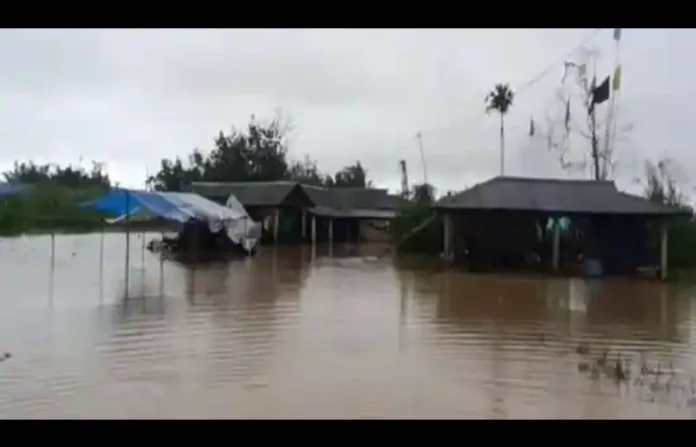Continuous downpours wreak havoc as the monsoon season Intensifies. In the wake of the monsoon season’s onset in Nepal, devastating floods and landslides have struck Eastern Nepal, resulting in the disappearance of at least 25 people and claiming one life. Over a span of 24 hours, starting from Saturday evening, these incidents have unfolded in three different districts of the region. Sankhuwasabha, one of the heavily affected districts, has experienced relentless rainfall since Saturday evening, exacerbating the situation. The district’s authorities have reported that 16 workers from the Super Hewakhola Hydropower project are missing after being caught in the floods that swept through the area. Tragically, seven houses have been washed away by the raging waters.
Birendra Godar, the Chief of the District Police Office, confirmed these distressing details to ANI over the phone. Additionally, the body of one worker has been discovered offshore, while efforts are underway to determine their identity, according to Deputy Superintendent Godar. The National Disaster Risk Reduction and Management Authority had previously estimated that around 1.25 million individuals would be affected by the monsoon this year. In its projection, the disaster management authority stated that approximately 1.298 million people from 286,998 households would be impacted by the impending disaster.
These figures highlight the vast scale of the potential devastation that the monsoon season could inflict upon Nepal. The unfolding situation in Eastern Nepal underscores the urgent need for coordinated disaster response efforts and preparedness. As the monsoon intensifies, there is a growing concern for the safety and well-being of those residing in vulnerable areas. Authorities and relief organizations must work hand in hand to ensure the swift and effective deployment of rescue teams, search operations, and necessary aid to affected communities. The government of Nepal, along with various local and international humanitarian agencies, should mobilize resources and personnel to provide immediate assistance to the affected regions.
This includes providing temporary shelters, clean drinking water, medical aid, and food supplies to those who have been displaced or stranded by the flooding and landslides. Furthermore, efforts should be intensified to raise awareness among vulnerable communities about the risks associated with monsoons and the importance of preparedness. Early warning systems, evacuation plans, and community-based resilience programs should be reinforced to minimize the impact of future disasters.
As Nepal grapples with the devastating consequences of the monsoon season, it is crucial for the international community to extend support and solidarity to the country. By joining forces, we can alleviate the suffering of those affected and contribute to building a more resilient Nepal in the face of natural disasters.


